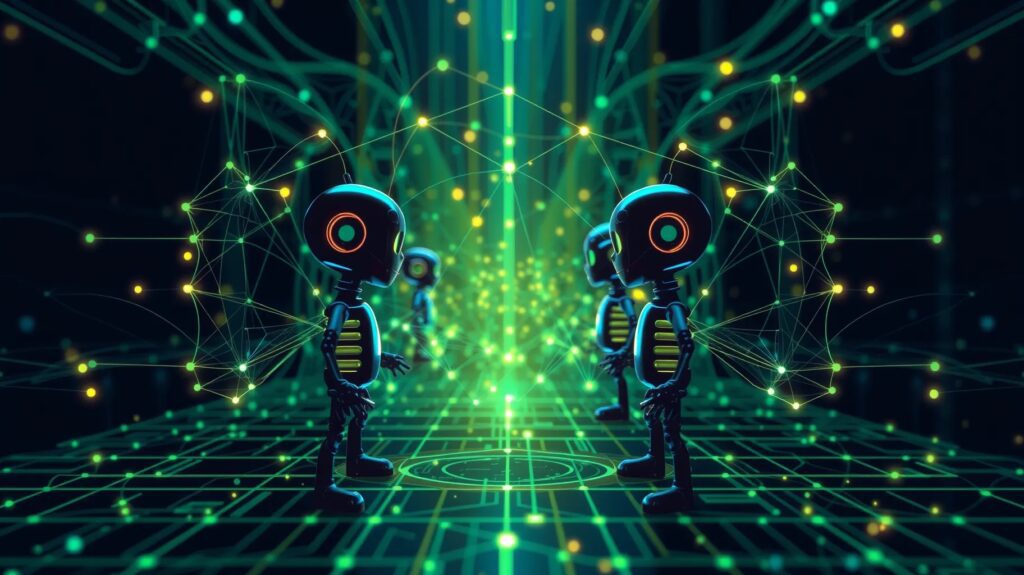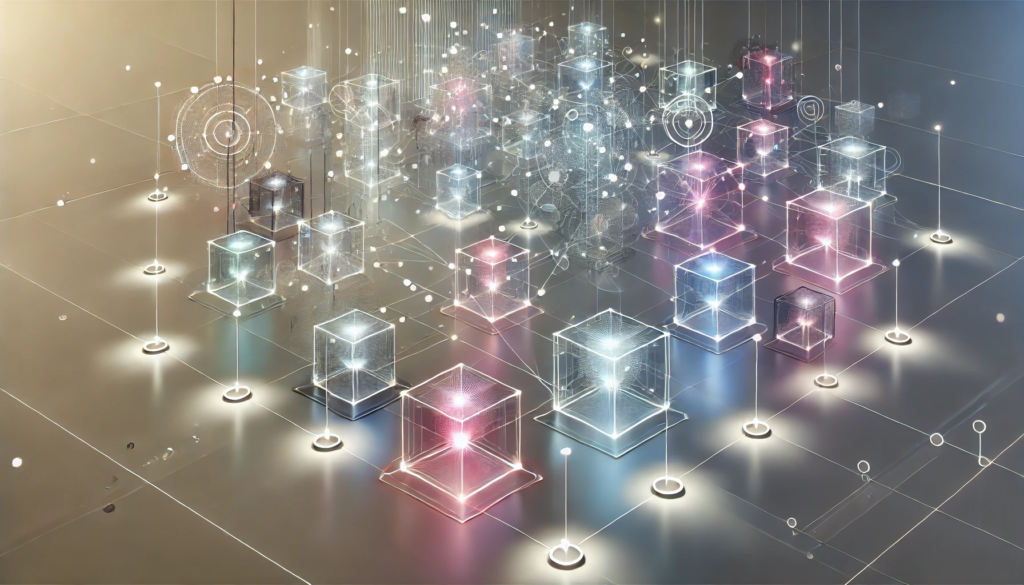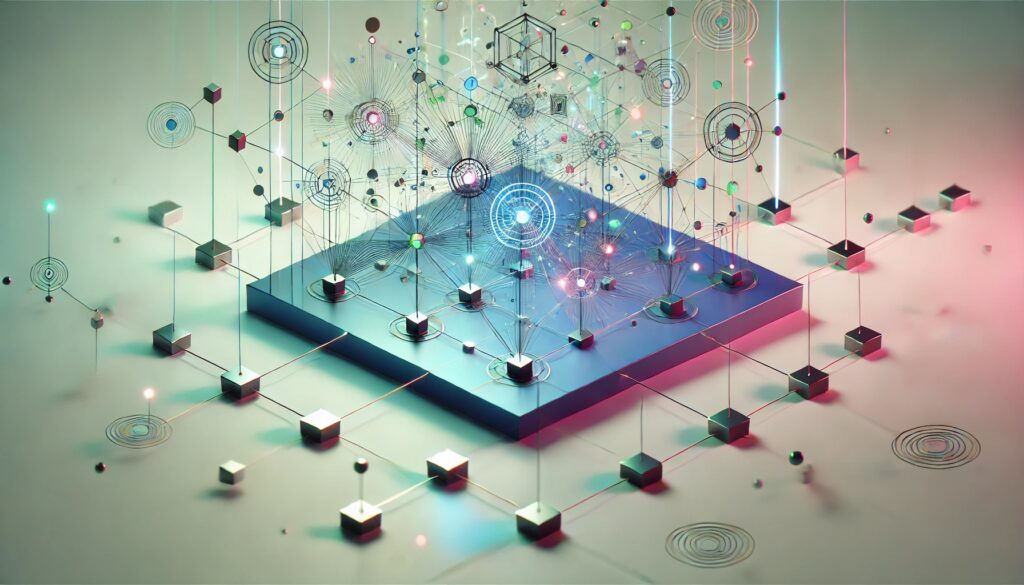
What Are Multi-Agent DQNs?
Multi-agent systems (MAS) are gaining attention for their ability to solve complex tasks that a single agent would struggle with. At the heart of these systems is the Multi-Agent Deep Q-Network (DQN), an approach that leverages reinforcement learning to enable multiple agents to work together—or compete—within dynamic, changing environments.
These agents are taught not only how to make decisions individually but also how to interact within a shared space. And here’s where things get interesting: the agents may be collaborating to achieve a shared goal, or they might be working against each other in competitive tasks.
In either case, they need to adapt their strategies continuously as the environment shifts, making the task far more challenging. It’s like playing chess while your opponent rewrites the rules mid-game!
Why Multi-Agent Systems Are Crucial in Dynamic Environments
Dynamic environments are essentially non-static settings where conditions evolve—sometimes drastically—over time. Think of self-driving cars on a highway, navigating traffic patterns that change with every mile. In these kinds of environments, traditional methods of decision-making fall short. This is where multi-agent systems step in.
When you introduce multiple agents, each equipped with its own version of a DQN, you create an ecosystem that mimics real-world interactions. One agent might observe new obstacles while another calculates the most efficient path. Together, they can solve the problem faster than any single agent could.
The adaptability and decision-making abilities of multi-agent DQNs enable them to not only keep up with dynamic environments but also excel in solving intricate problems that arise within them.
Cooperative vs Competitive Tasks: Key Differences
When it comes to multi-agent systems, cooperative and competitive tasks represent two fundamentally different challenges. In cooperative tasks, all agents work toward a common goal.
For example, imagine a fleet of delivery drones attempting to distribute packages as efficiently as possible across a city. Here, coordination is key. The drones need to communicate and strategize to cover the most ground without overlapping efforts.
On the other hand, competitive tasks turn the tables. Here, agents are in direct opposition to one another, much like rival chess players or competing financial traders. Each agent aims to maximize its own rewards, often at the expense of the others.
A classic example might be two AI systems bidding against each other in an auction. While cooperation requires synchronization, competition demands that agents learn defensive and offensive tactics to outmaneuver each other.
The Role of Deep Q-Networks (DQNs) in Multi-Agent Systems
Deep Q-Networks (DQNs) brought a revolution to reinforcement learning by using neural networks to approximate the Q-values of state-action pairs. When applied to multi-agent systems, DQNs allow agents to learn by interacting with the environment and maximizing cumulative rewards. In a multi-agent setting, though, things get trickier.

Each agent must account not only for the environment’s changing conditions but also for the evolving strategies of other agents. A DQN’s role becomes critical here because it learns these dynamic relationships over time. The goal is to ensure that each agent can predict the future outcomes of its actions in a shared space, adjusting to new behaviors from other agents along the way.
In cooperative environments, this might mean predicting the optimal synergistic action. In competitive settings, it could involve outguessing an opponent’s strategy.
Training Multi-Agent DQNs: An Overview
Training a multi-agent DQN is no walk in the park. Unlike single-agent systems, where the environment’s state evolves predictably, multi-agent environments add a new layer of complexity. Agents have to learn not only how the environment behaves but also how other agents will react. This creates a highly interactive system where every move influences future outcomes in unexpected ways.
In practice, agents start with minimal knowledge of the environment. They explore possible actions, slowly learning which moves yield the highest rewards. As each agent’s knowledge grows, they refine their strategy by reinforcing successful behaviors and avoiding unsuccessful ones.
However, the presence of other learning agents means that what works for one moment might not work the next. To solve this, agents must engage in constant adaptation—adjusting their tactics in real-time as they face new and ever-changing opponents.
Cooperative Learning in Multi-Agent DQNs
In cooperative scenarios, the essence of multi-agent DQNs revolves around coordination and shared learning. Each agent must figure out how to align its actions with the team’s overall objective. For instance, think of robots working together to build a structure. Each robot needs to complete its part without stepping on another’s work.
This requires seamless coordination, a task that’s far from trivial when the environment is dynamic and the state of play changes constantly.
To achieve success in cooperative tasks, agents need to share information about their actions and the environment, sometimes explicitly and sometimes implicitly. Communication between agents can be a game-changer in this context. For instance, agents can share insights about environmental shifts, reducing the likelihood of redundant actions or mistakes.
At the same time, they have to be careful not to flood the system with too much data—after all, processing time is limited, and not every piece of information is useful. This balance between effective communication and task execution is what sets apart successful multi-agent DQN systems.
Handling Competition in Multi-Agent DQNs
Now, in competitive scenarios, it’s a whole different ball game. Instead of working together, agents are pitted against each other. Here, the key challenge is to anticipate and counter the moves of rival agents. Think of it as a chess match, but with multiple players—all of them scheming to one-up each other. The best agents use reinforcement learning to learn patterns of their opponents, predict their actions, and ultimately outmaneuver them.
One of the most important aspects of handling competition in multi-agent DQNs is adaptability. Since agents are constantly learning and refining their strategies, a rigid or static approach won’t work. Instead, each agent must be prepared to adjust its tactics on the fly. For instance, in an auction-based competitive task, one agent might raise its bids based on how aggressive its competitors are, forcing them to either retreat or go all-in, depending on the situation.
This continuous process of learning and adapting is what makes competitive multi-agent DQNs so dynamic and effective.
Challenges in Multi-Agent DQNs for Complex Environments
Handling multi-agent systems within complex environments isn’t without its fair share of hurdles. For starters, the presence of multiple agents adds layers of unpredictability. Imagine a situation where dozens of agents are interacting, all trying to make optimal decisions based on constantly changing conditions. The sheer number of moving parts makes the environment highly volatile, which presents challenges in terms of both computation and strategy development.

Another challenge is what’s often referred to as the credit assignment problem. In a team-based task, when something goes right (or wrong), how do we assign responsibility to each agent? This is crucial because agents need to learn from their successes and failures. If one agent incorrectly assumes it contributed positively to a team’s success when in reality it hindered progress, its learning will be skewed.
Solving this challenge often involves developing sophisticated reward systems that reflect not only the outcome but the individual contribution of each agent.
The Impact of Communication Between Agents
In multi-agent DQN systems, communication—or lack thereof—can make or break the task. For cooperative tasks, communication is often the glue that holds everything together. Agents that can communicate effectively can coordinate their actions more efficiently, reducing redundancy and preventing costly errors. This is especially important in dynamic environments where the situation can change in the blink of an eye.
That said, effective communication isn’t just about sharing as much information as possible. It’s about sharing the right information at the right time. Over-communication can lead to information overload, which slows down decision-making processes. Under-communication, on the other hand, can leave agents in the dark, forcing them to make uninformed decisions.
Striking a balance between these two extremes is key to optimizing performance in multi-agent DQNs.
Balancing Exploration and Exploitation in Multi-Agent Systems
One of the biggest challenges in reinforcement learning, especially in multi-agent settings, is finding the right balance between exploration and exploitation. Exploration involves trying out new actions, even if they might not immediately seem like the best choices, to gather more information about the environment. Exploitation, on the other hand, is about taking actions that have already proven to yield good rewards.
In dynamic, multi-agent environments, this balance becomes even trickier. Each agent needs to explore enough to adapt to changes in the environment and learn the behaviors of other agents. However, too much exploration can lead to chaos, especially in cooperative tasks where coordination is critical. Similarly, focusing too heavily on exploitation can cause agents to become stuck in suboptimal strategies.
Successful multi-agent DQNs manage to walk this fine line, ensuring that agents learn effectively without getting stuck in behavioral ruts.
Real-World Applications of Multi-Agent DQNs
The versatility of multi-agent DQNs is starting to shine in real-world applications, from logistics to robotics, and even in game theory. For example, multi-agent DQNs have been successfully implemented in traffic management systems, where autonomous vehicles coordinate to reduce congestion.
In this setting, individual cars act as agents, continuously learning from each other’s positions and movements to avoid collisions while optimizing traffic flow.
Another fascinating application is in robotic swarm coordination. Picture a fleet of drones working together to perform tasks like surveying large areas or delivering packages. In these cases, multi-agent DQNs are essential for ensuring that the drones don’t interfere with one another while still achieving their goals efficiently.
Beyond that, multi-agent DQNs are also used in more competitive scenarios, such as financial trading algorithms, where AI agents compete in market environments to make profitable trades. The ability of these systems to adapt and learn from competitors makes them formidable in fast-paced, dynamic environments.
Scalability Issues in Multi-Agent DQN Training
While multi-agent DQNs offer incredible potential, scaling them to handle large numbers of agents or complex environments presents significant challenges. As the number of agents increases, so does the complexity of interactions between them.
More agents mean more variables to consider and more potential interactions to model. This can lead to combinatorial explosions, where the sheer number of possible states and actions becomes unmanageable for the agents to process effectively.
Moreover, the more agents there are, the harder it becomes to assign credit for successes or failures. For example, in a group of 100 agents working on a cooperative task, it’s challenging to determine which specific agent’s actions were critical in achieving a positive outcome. This results in longer training times and higher computational costs, making scalability a key issue for researchers working with multi-agent DQNs.
Future Directions in Multi-Agent DQN Research
The future of multi-agent DQN research is bright, with many avenues yet to be explored. One key area of focus is the development of better reward structures that can more accurately reflect each agent’s contribution to a shared task. By refining how rewards are distributed, researchers hope to overcome some of the credit assignment issues that currently hinder cooperative learning in multi-agent systems.
Another exciting direction is the potential for meta-learning, where agents learn how to learn. Instead of starting from scratch every time they encounter a new environment or task, agents could develop strategies to adapt more quickly based on prior experience. Additionally, integrating transfer learning—where knowledge gained in one scenario is applied to a new, but related, task—holds great promise for improving the efficiency of multi-agent DQNs.
Finally, ongoing research into communication protocols between agents aims to make coordination even more seamless in both cooperative and competitive environments.
How Reinforcement Learning Enhances DQNs
At the core of multi-agent DQNs is the power of reinforcement learning (RL). In RL, agents learn by interacting with their environment, receiving feedback in the form of rewards or penalties. This learning process allows agents to optimize their behaviors over time, making DQNs well-suited to handle complex, dynamic tasks. In multi-agent systems, RL takes on an additional layer of complexity because each agent is not only learning from the environment but also from the other agents’ behaviors.
What sets Deep Q-Networks apart is their ability to approximate the value of taking certain actions in specific states, even in high-dimensional environments where calculating every possible action is computationally infeasible.
By combining neural networks with traditional RL algorithms, DQNs can efficiently learn from large-scale environments, making them ideal for multi-agent systems that need to adapt quickly and continuously improve their decision-making processes.
Solving Coordination Problems with Multi-Agent DQNs
Coordination is often the crux of successful multi-agent DQN deployment, especially in cooperative tasks where synchronization between agents is essential. One of the trickiest challenges in coordination is ensuring that agents don’t get stuck in local minima, where they repeatedly choose suboptimal strategies because those strategies seem good in isolation but don’t work well collectively.
To solve these coordination problems, multi-agent systems use shared learning objectives and sometimes even reward shaping to encourage agents to work together more effectively.
For example, in a robotic fleet tasked with assembling parts on a production line, multi-agent DQNs help each robot figure out not just what its role should be, but how it can align with other robots to maximize overall productivity.
The Evolution of Strategies in Competitive Scenarios
When it comes to competitive scenarios in multi-agent DQNs, strategies evolve rapidly as agents continuously learn and adapt to each other’s moves. Think of it like an AI-powered chess tournament where every player is constantly refining their game.
In these scenarios, reinforcement learning helps agents improve through trial and error, but the presence of competitors makes things more unpredictable. Agents must learn to anticipate not just the environment but also the strategies of their opponents.
One interesting aspect of this evolution is how agents can develop both offensive and defensive tactics. For instance, in a competitive auction task, an agent might initially take risks by placing higher bids. However, as it observes how its opponents react, it could shift to a more conservative strategy, waiting for the right moment to pounce.
Over time, these agents essentially build counter-strategies against each other, pushing the competition into a continuous loop of strategic refinement.
This dynamic environment fosters what’s known as a non-stationary learning process. Since each agent is learning, the environment itself becomes fluid, and strategies that worked initially may quickly become obsolete. Adapting in real-time, agents must stay a step ahead of their competitors while avoiding falling into predictable patterns.
Why Multi-Agent DQNs Hold the Key to AI’s Future
The potential of multi-agent DQNs is immense, especially as we look toward the future of AI. The real power of these systems lies in their ability to tackle tasks that mimic real-world complexities—whether it’s autonomous vehicles navigating chaotic city streets or a group of AI systems managing stock market trades.
Multi-agent reinforcement learning enables agents to thrive in environments where they must constantly react to other agents’ actions, be it in competition or cooperation.
What’s particularly exciting about multi-agent DQNs is their ability to improve and scale over time. As researchers refine techniques in reward allocation, communication protocols, and scalability, the effectiveness of these systems will only grow. This will open doors to more advanced applications like AI-powered negotiations, multi-agent healthcare systems, and global logistics networks.
Ultimately, multi-agent DQNs represent a fundamental shift in how AI tackles complex, dynamic problems. With the ability to adapt and learn from both their environment and each other, these agents can outperform traditional single-agent systems in ways that could revolutionize industries. The key to unlocking even greater potential lies in pushing the boundaries of how agents coordinate, compete, and cooperate in diverse and ever-changing landscapes.
Conclusion: The Path Forward for Multi-Agent DQNs
The ongoing development of multi-agent DQNs is not just an exciting research frontier—it’s a window into the future of artificial intelligence. These systems provide the framework for agents to either work together or challenge one another in increasingly sophisticated ways. As AI technology evolves, we’re seeing multi-agent systems come closer to achieving the complexity of real-world interactions, opening up possibilities in everything from autonomous robotics to financial markets.
The challenge now is refining these systems to handle even larger scales and more intricate environments. With advances in reinforcement learning, communication strategies between agents, and improved reward mechanisms, multi-agent DQNs are on track to become indispensable tools in a wide range of industries.
In the end, multi-agent DQNs are set to push the boundaries of what AI can do, empowering systems to think, act, and adapt in ways that mirror human cooperation and competition. As we unlock their full potential, the applications will be as limitless as the tasks we can imagine, reshaping not only technology but the world we live in.